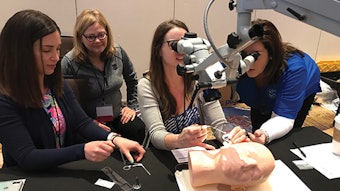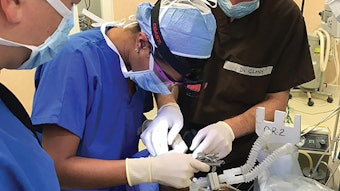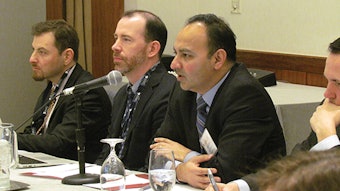March 1-7, 2020, is National Sleep Awareness Week – Information for Your Patients: Sleep Apnea
Regular snoring in adults and children can be a sign of a more serious problem: obstructive sleep apnea. Sleep apnea involves blockage of the airway during sleep and can be characterized by decreased oxygen levels and sleep fragmentation.
Cristina Baldassari, MD, Chair, AAO-HNS Sleep Disorders Committee

Sleep & Snoring Patient Information
Go to ENThealth.org for more patient information related to sleep.
Conditions & Treatments:
- Pediatric Sleep-disordered Breathing
- Snoring, Sleeping Disorders, and Sleep Apnea
Be ENT Smart:
- Continuous Positive Airway Pressure (CPAP)
- Treatment Options for Adults with Snoring
- Surgery for Obstructive Sleep Apnea
- Tips to Improve Your Sleep Quality
- FAQs: Rhinoplasty Patients with Obstructive Sleep Apnea (OSA)
https://www.enthealth.org/sleep-and-snoring/
To find an otolaryngologist near you, go to “Find an ENT” at https://www.enthealth.org/find-ent/.
Regular snoring in adults and children can be a sign of a more serious problem: obstructive sleep apnea. Sleep apnea involves blockage of the airway during sleep and can be characterized by decreased oxygen levels and sleep fragmentation. Sleep apnea is common and affects at least 25 million adults living in the United States. While one to four percent of healthy school-aged children have sleep apnea, rates are much higher in children with certain medical problems, such as obesity. In adults, sleep apnea can have a significant impact on cardiovascular health, including putting patients at increased risk of high blood pressure and stroke. Children with sleep apnea can have difficulty focusing, poor school performance, daytime sleepiness, and bedwetting. Unfortunately, many individuals with sleep apnea have not been diagnosed and are not receiving adequate treatment.
Otolaryngologists, also known as ear, nose, and throat (ENT) surgeons or head and neck surgeons, are uniquely qualified to care for patients with sleep apnea. They are able to provide comprehensive management of sleep apnea in both children and adults, including diagnosis and treatment. If you are concerned that you or your child has sleep apnea, you should schedule an appointment to see a local ENT. They will examine your nose and mouth to check for any possible causes of sleep apnea, such as enlarged tonsils. Most commonly, the ENT will order a sleep study, also called a polysomnogram, to check for sleep apnea. This overnight test is typically performed at home for adults and in a sleep laboratory for children. The sleep study measures various sleep parameters, including sleep stages, heart rate, and oxygen levels, and provides information about your sleep apnea severity.
The primary therapy for sleep apnea in children is surgical removal of enlarged tonsils and adenoids by an ENT. In adults with sleep apnea, the first-line treatment is typically positive airway pressure (PAP) therapy that involves wearing a mask over the mouth and/or nose that delivers a constant airflow to prevent the breathing passages from obstructing. ENTs will recommend a PAP mask and pressure setting that will improve your sleep apnea. In patients who are unable or unwilling to use PAP therapy, the ENT can suggest alternate treatments, such as a mandibular advancement device (oral appliance) or surgical therapy. ENTs may recommend a drug-induced sleep endoscopy that involves examining the upper airway with a flexible scope while the patient is sedated to determine sites of blockage that might be addressed with surgery. There have been numerous advances in surgery for sleep apnea over the past several years. One such example is the development of the hypoglossal nerve stimulator. ENTs surgically implant the device in the chest wall during a short procedure, and it stimulates forward movement of the tongue during sleep to prevent airway blockage.
Treatment of sleep apnea in adults and children results in improvement in sleep and quality of life. For more information about snoring and sleep apnea and to find an ENT near you, visit ENThealth.org.
















